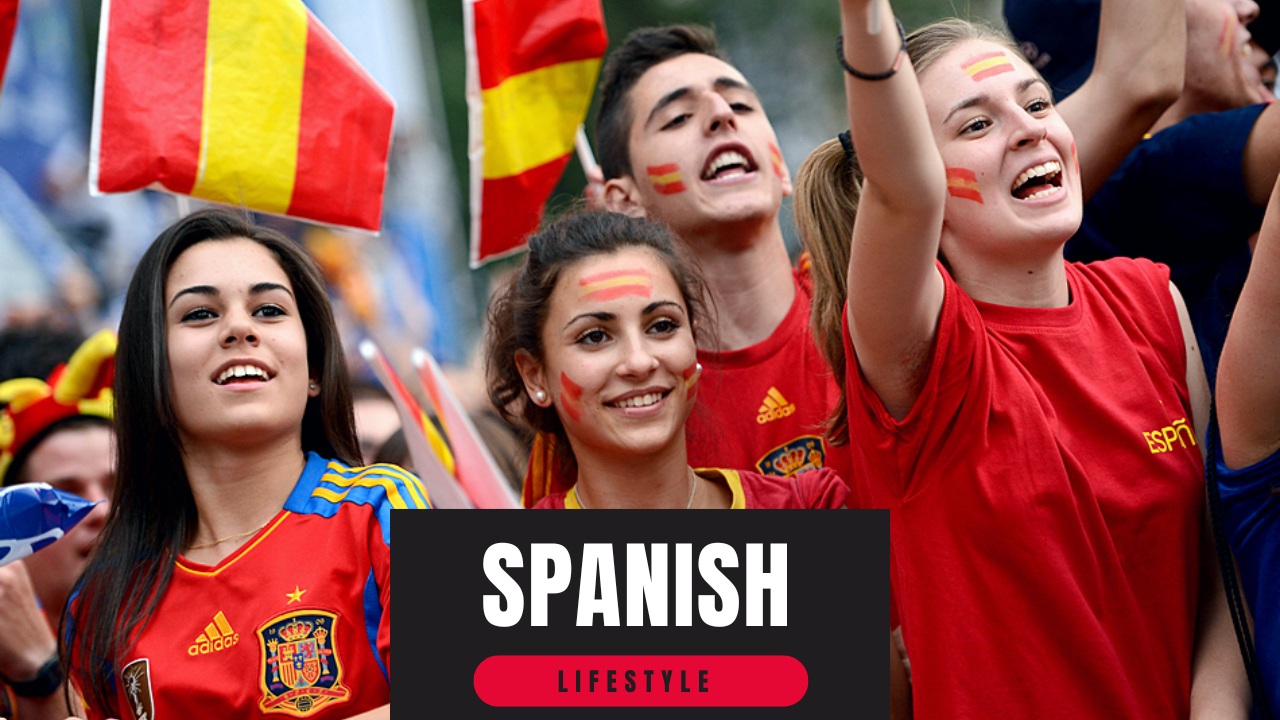When many people think of Spanish people, they often imagine one type of look or behavior. But Spain is a country full of variety. From the north to the south, there are different languages, traditions, and lifestyles. The idea of a typical Spanish look with dark hair dark eyes is mostly a myth.
Spain’s history includes many influences, including Roman, Moorish, and Christian cultures. This mix created a rich and diverse society. Understanding Spanish regional diversity and Spanish social customs helps break old ideas and shows the real picture. This article explores who the Spanish really are and why they’re often misunderstood around the world.
Who Are the Spanish People?
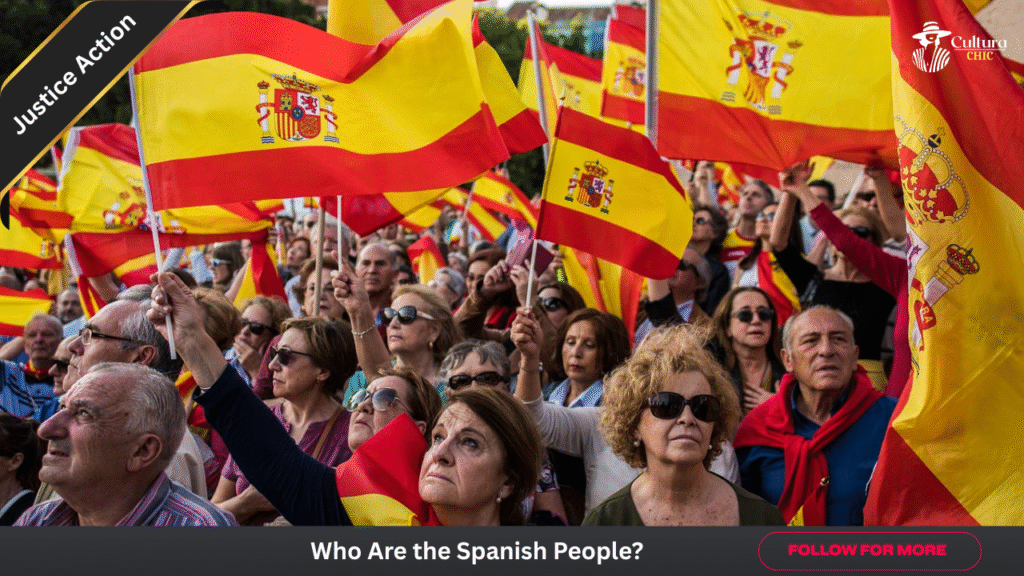
Spanish people are often misunderstood. Many outsiders believe there’s one single Spanish identity, but that’s not true. Spain is a country of many cultures, languages, and histories. People from different regions may have very different customs and traditions.
Spain’s people come from many backgrounds. Over the centuries, the Spanish immigration story includes Roman, Moorish, Jewish, Visigoth, and Christian roots. This rich mix helped shape modern Spain. Because of this, there is no single way to define what a “typical Spaniard” looks like or how they behave.
The Rich Heritage of Spanish Culture
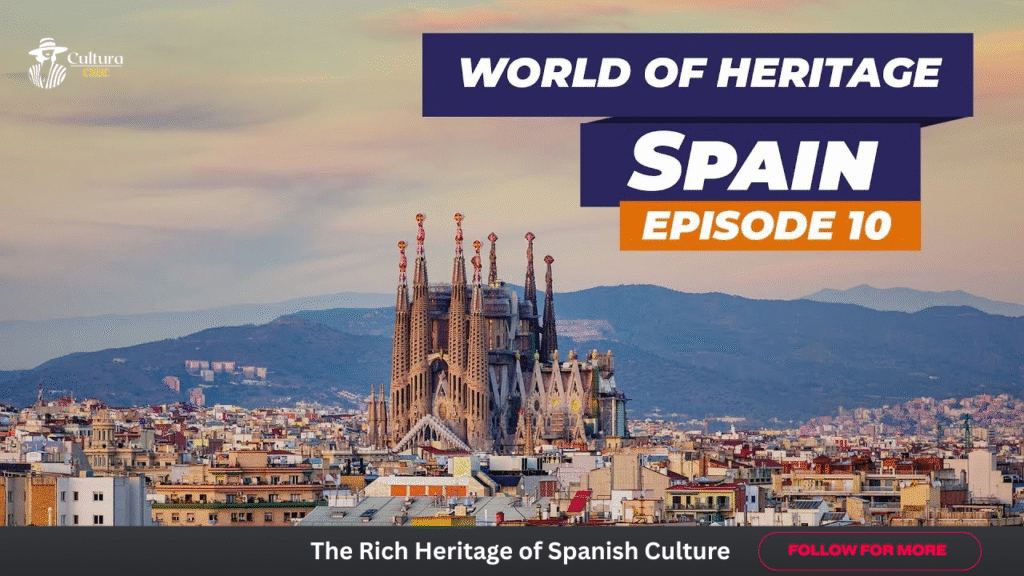
The Spanish culture has deep roots in history. Roman roads, Moorish castles, and Christian cathedrals all stand as proof. Festivals, food, music, and language show how diverse and old Spanish traditions are.
Spanish festivals like the Semana Santa Seville and Valencian festivals are famous around the world. Locals celebrate these with devotion, color, and energy. These events show how people across Spain hold tight to faith, art, and family.
Regional Differences Among Spanish People
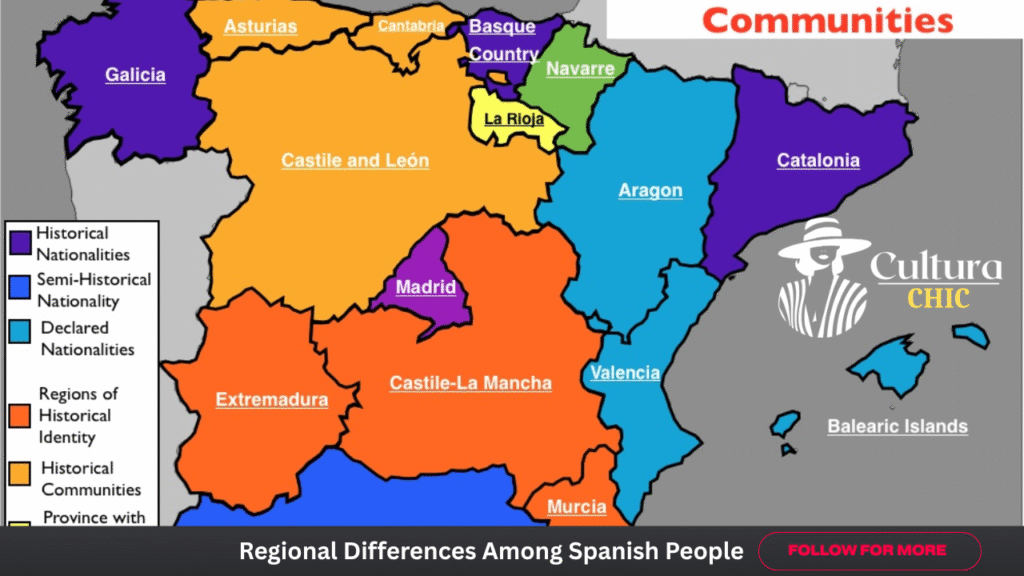
Spain is not one culture but many. There’s a clear Spanish regional diversity from northern vs southern Spain. In the north, people might seem more reserved. In the south, like in Andalucía culture, people are known for being expressive and friendly.
Each region has its own language. This language diversity in Spain includes Castilian Spanish, Catalan identity, Basque language, and Galician culture. These are not just dialects but full languages, shaping how locals see themselves and each other.
What Do Spanish People Look Like?
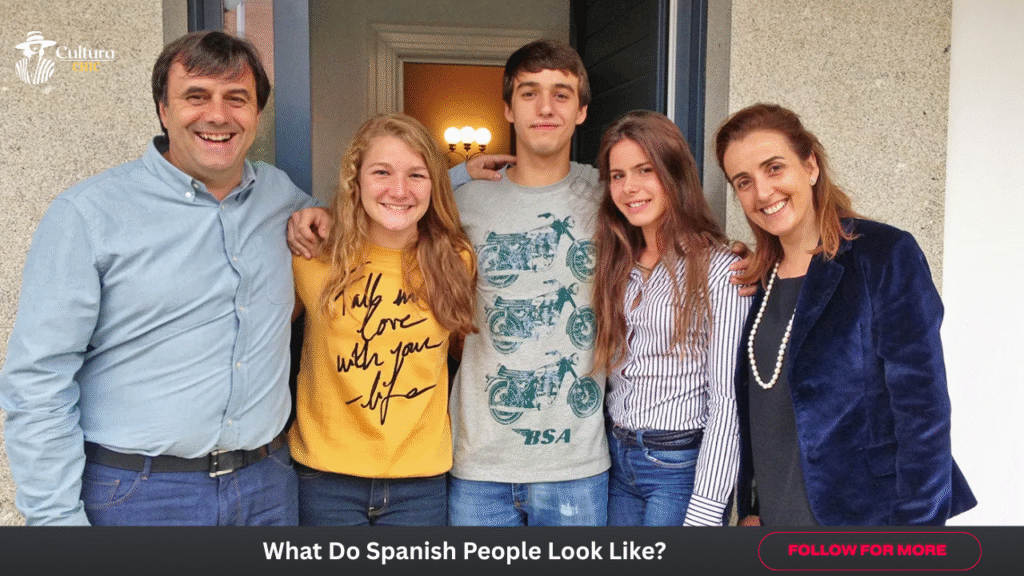
What do Spanish people look like, The answer depends on where in Spain you are. There’s a myth that all Spaniards have dark hair dark eyes, but this is not accurate. Northern Spaniards often have light eyes and hair. Southern Spaniards can be darker, due to Latino vs Iberian appearance and historic mixing.
So, is it true all Spanish people have dark hair? No. People from Galicia may look Irish. In Alicante, green eyes are common. The Penélope Cruz look may be popular in films, but it doesn’t show the full picture. Why do people think all Spaniards look the same? Media and Hollywood stereotypes play a big role in that.
Spanish Fashion and Beauty Standards

Spanish people care about how they dress. In cities, fashion is chic and modern. In rural areas, it’s often more traditional. Styles can also vary from Madrid vs Seville culture. Madrid favors sleek city looks, while Seville leans into traditional colors and styles.
Hair is a big deal. Bleached or colored hair is very popular. Though people are born with dark tones, you’ll see many blondes too. Beauty trends mix local looks with global influences. Grooming is taken seriously, especially in public.
The Spanish Communication Style
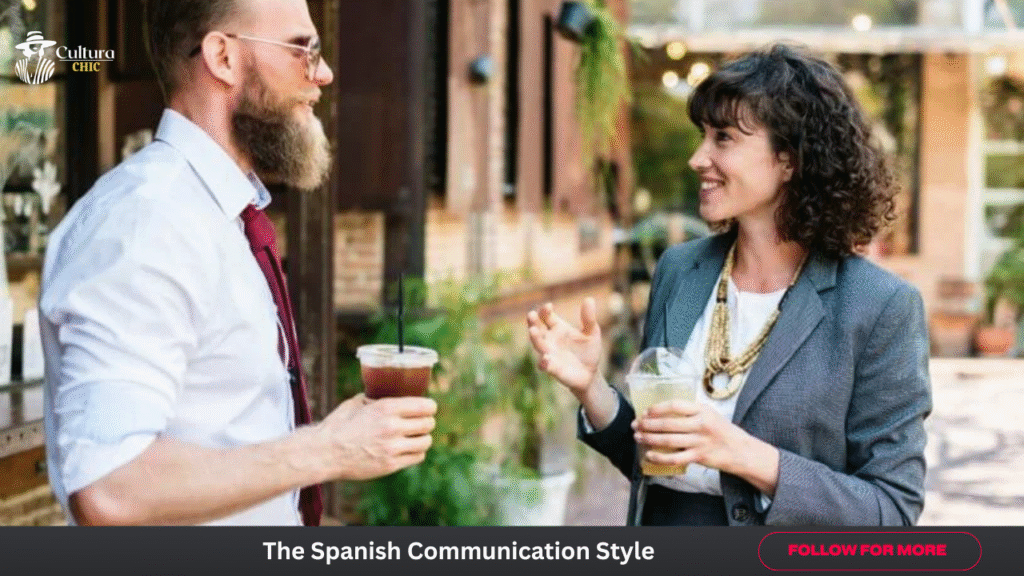
How do people greet in Spain?
They kiss on both cheeks or shake hands. Warm greetings are common. The Spanish communication style is open and expressive. People use gestures and speak with emotion. This is part of Mediterranean behavior.
Why do Spaniards interrupt each other when speaking?
It’s normal in Spain. This can seem rude to outsiders. But here, it’s a sign of interest. It’s not meant to silence the speaker. In fact, many enjoy the fast, overlapping flow of talking. It’s just different from what Americans expect.
Social Habits and Lifestyle
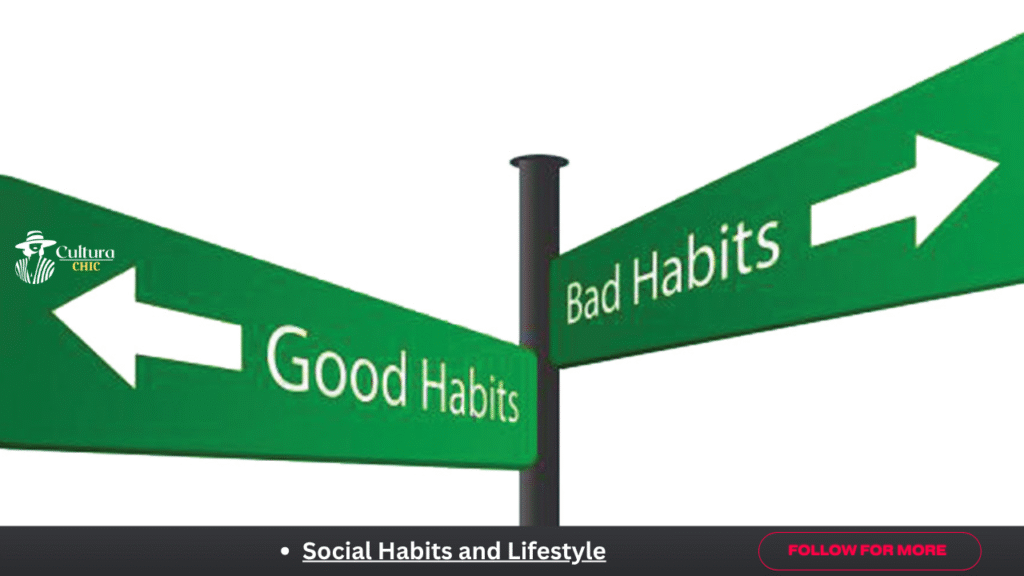
Life in Spain is different from the U.S. The pace is slower. People spend more time with family and friends. They enjoy meals together and stay out late. Eating is a social event.
Do Spanish people take siestas every day? Not all do. The siesta in Spain is more common in smaller towns. Big cities, like Madrid and Barcelona, rarely shut down. Still, banks and some shops may close in the early afternoon, especially in summer.
Common Stereotypes About Spanish People
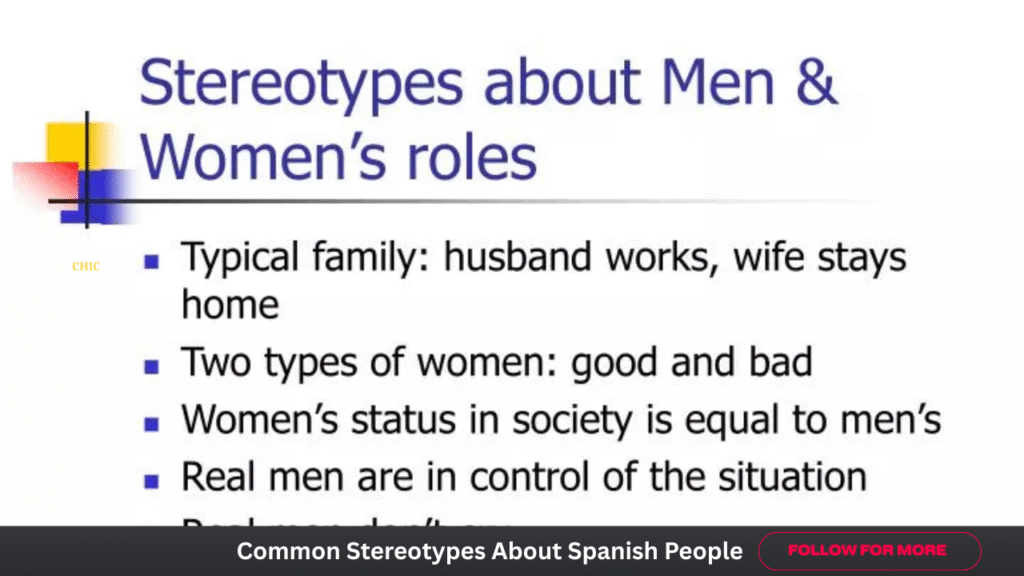
There are many Spanish stereotypes that aren’t true. One common myth is that all Spaniards love bullfighting. But do all Spaniards like bullfighting? No. Many dislike it and never attend. In places like Catalonia, it’s even banned.
Another myth is that Spanish cuisine is spicy like Mexican food. Is Spanish food spicy like Mexican food? Definitely not. Spanish dishes are mild. Hot sauce is rare. Spain and Mexico have very different cooking traditions.
The Art of Flamenco and Architecture
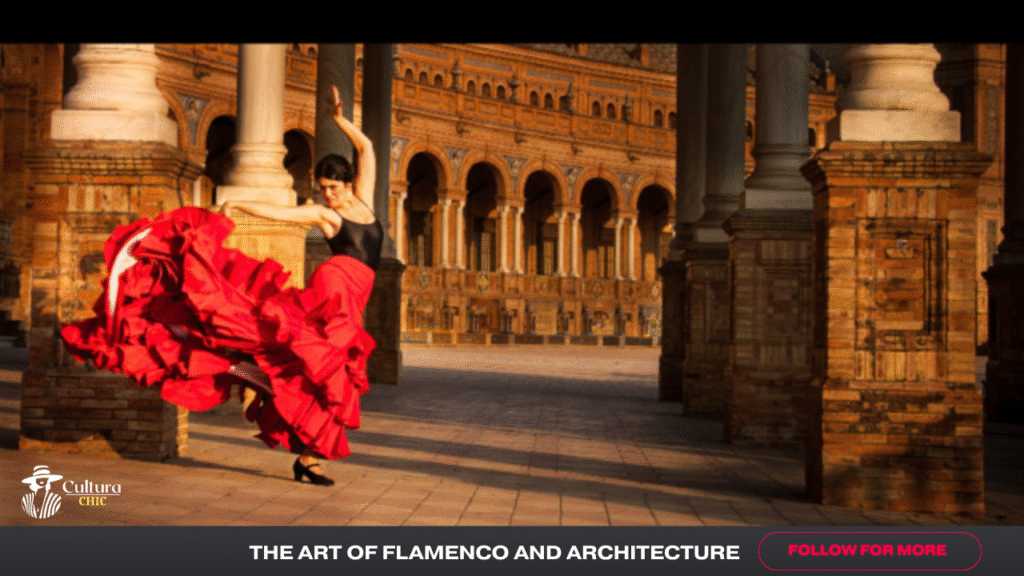
Flamenco dancing is a powerful form of art. It began in Andalucía culture and combines music, emotion, and movement. Flamenco isn’t just a tourist show. It’s a deep, soulful expression of Spanish life.
Spanish architecture is just as bold. From the Moorish Alhambra to Gaudí’s buildings in Barcelona, it’s rich in color and shape. These styles show how art and faith have shaped Spain’s towns and cities over the centuries.
Challenges and Misconceptions Foreigners Face
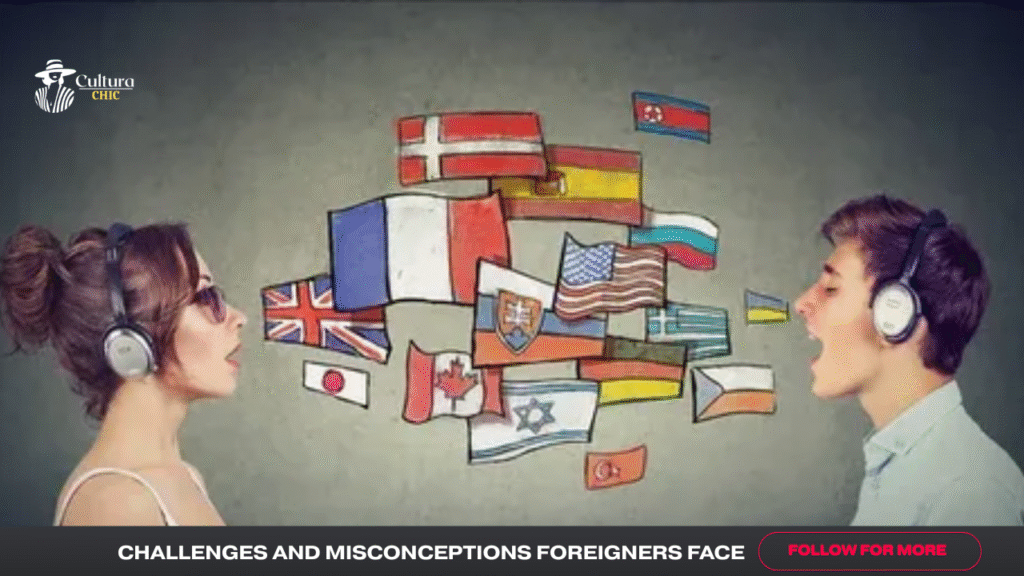
Visitors often face cross-cultural misunderstandings. One big issue is What’s the deal with Spanish personal space? In Spain, people stand close. They may touch your arm or back during a chat. This can feel strange to Americans.
Typical Spanish behavior foreigners find rude includes talking over each other, being direct, or not smiling at strangers. But this is normal here. These are just differences in Spanish social customs and Spanish public etiquette. Once understood, they can be appreciated.
Table: Key Regional Differences in Spain
| Region | Language | Known For | Physical Traits |
| Catalonia | Catalan | Art, independence, Barcelona | Lighter features, varied |
| Basque Country | Basque (Euskera) | Cuisine, mountains, traditions | Northern European appearance |
| Galicia | Galician | Celtic roots, rainy weather | Pale skin, light eyes |
| Andalucía | Castilian Spanish | Flamenco, festivals, warm climate | Olive skin, dark hair, passionate |
Table: Common Cultural Myths vs. Truth
| Myth | Truth |
| All Spaniards have dark hair and dark eyes | There is wide diversity in physical features |
| Everyone eats paella every day | True paella Valencia style is mostly eaten in Valencia |
| Spaniards speak with a lisp | This ceceo and seseo trait varies and is misunderstood |
| All Spanish food is spicy | Spanish cuisine vs Mexican is very different; Spanish food is mild |
| Siestas are for everyone | Do Spanish people take siestas every day? Not in major citie |
Conclusion
The Spanish people aren’t defined by just one look, one language, or one lifestyle. From dark hair, dark eyes to lighter Northern traits, Spain is a land of contrast and culture. Forget the old Spanish stereotypes—real Spain is full of regional pride, rich traditions, and warm, expressive people.
Whether you’re drawn to the passion of flamenco dancing, the flavor of paella Valencia, or the mystery of Castilian Spanish, you’ll find more than you expected. Understanding the truth behind the myths helps you see Spain for what it truly is—diverse, vibrant, and unforgettable.
FAQS
What are the characteristics of Spanish people?
Friendly, expressive, family-oriented, with a deep love for tradition and social life rooted in Mediterranean behavior.
What are traditional Spanish features?
Often dark hair, dark eyes, and olive skin—but features vary greatly due to rich Spanish regional diversity.
Who are Spaniards genetically closest to?
Spaniards are closest to Portuguese, Italians, and other Southern Europeans, with North African and Mediterranean roots.
How do you know if you have Spanish descent?
Check for Iberian DNA, Spanish surnames, or family roots in regions like Catalonia or Andalucía culture.
Welcome to Cultura Chic! I’m CHAUDHARY ALI, an AI-Powered SEO, and Content Writer with 2 years of experience.

